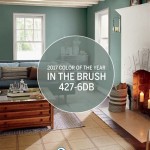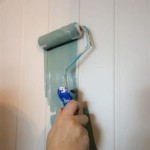Texture paint can be a great way to add depth and interest to your interior walls. Whether you’re looking to create a subtle effect, or go for something more dramatic, the right paint can make a big difference to the overall look of your home. But with so many different types of texture paint available, it can be hard to know which one is right for you.
Types of Texture Paint
Texture paint can be divided into two main categories: textured paint and wall covering. Textured paint is a thick, opaque paint that is applied directly to the surface of the wall. Wall coverings, on the other hand, are thin sheets or rolls of material that are applied to the wall to create a textured effect.
Choosing the Right Finish
When choosing the right texture paint for your walls, it’s important to consider the final finish you’re looking for. Different types of texture paint will create different effects, so it’s important to take some time to think about the look you’re trying to achieve. Here are some of the most popular finishes:
- Matte: A matte finish is a smooth, flat finish that gives walls a subtle texture.
- Eggshell: An eggshell finish is slightly textured, giving walls a subtle sheen.
- Satin: A satin finish is slightly glossy, giving walls a more pronounced texture.
- Gloss: A gloss finish is highly reflective, giving walls a glossy, highly textured finish.
- Metallic: A metallic finish is a highly reflective finish that gives walls a metallic, shimmery effect.
Choosing the Right Color
The color of your texture paint can also have a big impact on the overall look of your walls. When choosing a color, take into account the existing color palette of the room and try to stick to colors that complement each other. You can also choose to go for a completely new look by choosing a bold, contrasting color.
Choosing the Right Paint
When it comes to choosing the right paint, there are a few things to consider. First, think about the type of coverage you need. If you’re looking for a bold, textured finish, you’ll want to choose a thicker, more opaque paint. On the other hand, if you’re looking for a more subtle effect, you’ll want to choose a thinner, more transparent paint. You’ll also want to make sure you choose a paint that is suitable for use on interior walls. Most paints will specify if they are suitable for this purpose.
Conclusion
Choosing the right texture paint for your interior walls is an important decision. By taking the time to consider the type of finish, color, and paint you need, you can ensure that your walls look their best. With the right texture paint, you can create a beautiful, textured look that will add depth and interest to any room.













:max_bytes(150000):strip_icc()/Design_WestWild_Photog_JuliePointerAdams-d24b00c39ddc4e478b88017e368ae65c.jpg)

Related Posts








